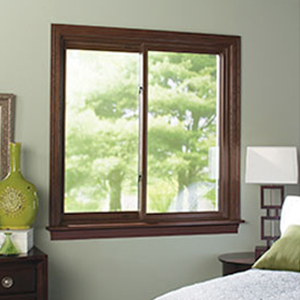Condensation is a sure sign that your windows need to be changed.
Windows are an important obstacle in between the extreme, variable weather outside and our calm, regular residence temperatures. Home replacement windows tend to have a fifteen to twenty-year lifespan, so the good news is we do not have to think about changing them too often. But recognizing when it's time to replace them can be difficult. You could be tempted to try and hold out for another season if you recognize the warning signs. However replacing your windows currently can help you expand the life of your entire house as well as keep you and your household warm all wintertime long. Below are a couple of indications that your windows are not ready for the severe winter months this year.
Drafty Residence
As windows age, they begin diminishing, breaking, as well as not closing appropriately, allowing air from inside your home to flow out. As a result of this, your HVAC system has a hard time to keep your residence at a consistent temperature level and sends your power bills escalating. If your residence is noticeably a lot more breezy or your electric expenses appear to be going up this fall for no noticeable reason, you might intend to have your windows took a look at.
Hard to Lock
We delight in having our home windows open when the climate behaves, but they shouldn't be open all the moment. Throughout the winter and when we're not home, your home windows need to be shut in area and locked. Windows with malfunctioning locks is a major safety threat that need to be remedied as soon as possible to keep your household risk-free. Usually the lock can be fixed inexpensively, however if the home window is having problem remaining open or shut or is dripping air, it might be best to just install a new one.
Condensation Forming
The largest indicator that you require brand-new home windows is when condensation starts to form on the inside of your home window when it is closed and also secured. This is indicative of a likely irreversible flaw as well as should be addressed asap to avoid the potential growth of mold and mildew in the framework, which can spread to various other locations of your house and cause major damage when left untreated.
Have you just about had it with your old, breezy windows?
Is this the year you've made a decision to ultimately replace your home windows? Replacing your home windows with brand-new ones has great deals of advantages, consisting of an energy efficiency increase, better ventilation, as well as better high quality of light in your house. The National Fenestration Rating Council licenses as well as classifies windows (as well as doors as well as skylights) on their efficiency as well as power effectiveness. When you're looking for brand-new home windows you'll see these ratings on the NFRC tag. In this week's blog, we'll speak about the best ways to read this label making sure you're making an educated decision on your brand-new home windows.
Warmth Gain and also Loss
The initial three residential properties on the label relate to just how the window carries out with regard to warmth gain and also loss. Windows gain and also lose heat in three methods:
Straight conduction via the glass.
Radiation of warm from the sun right into the house, as well as away from the house from items in your home.
Air leak through and around the home window.
U-factor
This is "The price at which a window, door, or skylight conducts non-solar warm circulation." The takeaway here is "The reduced the U-factor, the more energy-efficient the window, door, or skylight."

Solar Heat Gain Coefficient
The SHGC tells us just how much radiation is admitted via the window and released as warm in the residence. The lower the number, the less warmth is sent. Nonetheless, this doesn't necessarily suggest you desire a reduced SHGC. For example, because a higher SGHC suggests the window enables much more heat in, you can enable more solar warmth inside in the winter months, which could decrease your home heating requirements. In this case, the climate you stay in will play a major consider picking an SHGC score.
Air Leakage
This quantifies just how much air the window allows about a specific pressure difference across it. The reduced the rating, the www.bureshhomesolutions.com much less air leak.
Sunshine Transmittance
The following two rankings measure how much light a home window lets right into your house.
Visible Passage (VT).
This number between 0 and 1 actions what portion of the spectrum of noticeable light the window lets through. The higher the fraction, the much more light the window will certainly permit. If you intend to utilize daylighting in your home, you'll desire a higher portion. If you want to lower interior glow, you might want a lower fraction.
Light-to-Solar Gain.
This number is the ratio in between the SHGC as well as the VT. "The higher the number, the more light transferred without including extreme quantities of warmth.".